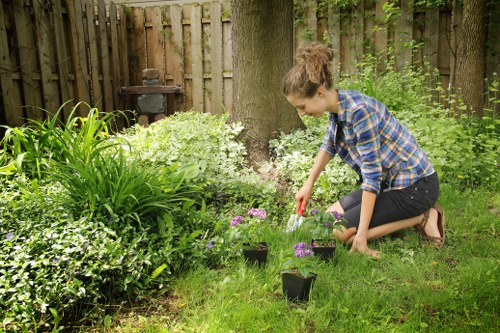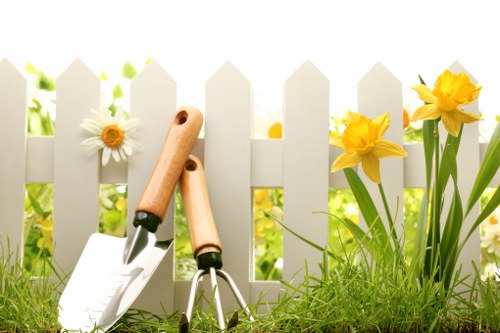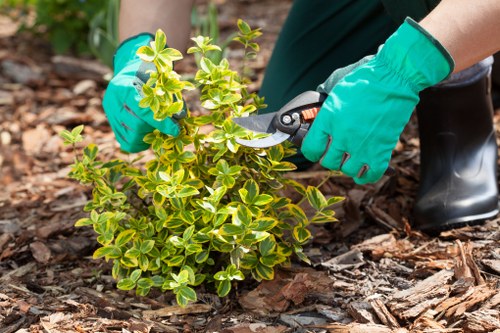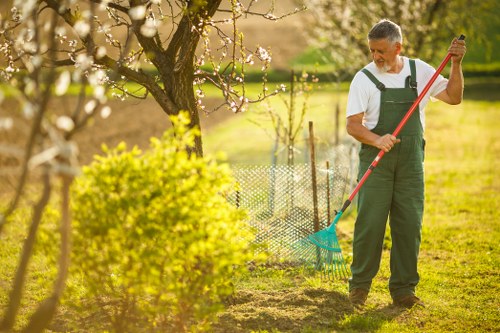Lawn Turf Installation in Purfleet: Transform Your Outdoor Space

Are you dreaming of a lush, green lawn in your Purfleet home? Lawn turf installation is a fantastic way to achieve a beautiful and functional outdoor space. Whether you have a small garden or a large backyard, a well-installed lawn can enhance the beauty and value of your property.
Choosing the right turf and ensuring proper installation is crucial. This guide will walk you through everything you need to know about lawn turf installation in Purfleet, from preparation to maintenance.
With the right approach, you can enjoy a vibrant and healthy lawn that your family and neighbors will admire.
Why Choose Lawn Turf Installation

Installing lawn turf offers numerous benefits. It provides an instant green space, eliminating the need to wait for grass to grow. This immediate transformation is perfect for those who want to enhance their garden quickly.
Additionally, a well-installed lawn can reduce soil erosion, improve air quality, and provide a safe area for children and pets to play. Lawn turf is also great for reducing dust and improving the overall aesthetic of your property.
With the right care, your turf will remain vibrant and healthy, offering long-term benefits for your household.
Benefits of a Well-Installed Lawn Turf
- Instant Greenery: Achieve a beautiful lawn overnight without waiting for seeds to sprout.
- Reduced Maintenance: Quality turf requires less maintenance compared to traditional lawns.
- Durability: Well-installed turf can withstand heavy foot traffic, making it ideal for families.
- Improved Aesthetics: Enhance the look of your garden with a uniform, green lawn.
- Environmental Benefits: Helps in carbon capture and provides a habitat for beneficial insects.
- Weed Control: A dense turf inhibits weed growth, reducing the need for chemical treatments.
- Temperature Regulation: A green lawn can help keep your home cooler by providing shade and reducing heat absorption.
Preparing Your Property for Turf Installation
Proper preparation is key to ensuring the success of your lawn turf installation. This section covers the crucial steps you need to take before laying the turf.
Assessing Your Yard’s Condition
Before installation, it's important to evaluate the current state of your yard. Check for any areas that are prone to waterlogging or poor drainage, and address these issues to prevent future problems. Removing debris, rocks, and existing vegetation is essential to create a clean slate for your new turf.
Additionally, assess the sunlight exposure in your garden. Most turf types require at least 4-6 hours of sunlight daily. If parts of your garden are shaded, you might need to trim trees or consider turf varieties that thrive in lower light conditions.
Understanding the soil type is also crucial. Purfleet soils can vary, so conducting a soil test to determine pH levels and nutrient content can help you amend the soil appropriately for optimal turf growth.
Choosing the Right Turf Type
There are different types of lawn turf suitable for Purfleet's climate. Some popular options include Bermuda grass, perennial ryegrass, and fescue. Each has its own benefits, so choose the one that best fits your needs and conditions.
Perennial Ryegrass: Known for its quick germination and establishment, perennial ryegrass is ideal for new lawns and areas that require fast coverage.
Fescue: Fescue grasses are hardy and drought-resistant, making them suitable for areas with varying weather conditions.
Bermuda Grass: This type of turf is highly durable and thrives in full sun, perfect for high-traffic areas.
Consider consulting with a local turf supplier or lawn care expert to determine the best turf variety for your specific garden conditions.

First, assess your yard’s current condition. Remove any existing grass, weeds, or debris that might interfere with the new turf. Level the soil to create a smooth surface, which helps the turf lay flat and encourages healthy root growth.
Next, choose the right turf type for your area. There are various types of turf available, each with its own characteristics. Consider factors such as climate, soil type, and the intended use of your lawn when making your selection.
Properly preparing the soil by adding nutrients and ensuring good drainage will set the foundation for a healthy and long-lasting lawn.
- Soil Amendment: Add organic matter like compost to improve soil structure and fertility.
- Grading: Ensure the soil slopes away from foundations to prevent water pooling.
- Compacting: Lightly compact the soil to provide a firm base for the turf.
The Turf Installation Process
Once you have prepared your yard and selected the appropriate turf, it's time to move on to the installation process. This section outlines the steps to ensure a successful lawn installation.
Step-by-Step Installation Guide
- Prepare the Soil: Remove any existing vegetation and level the ground.
- Lay the Turf: Place the turf rolls starting from one corner and work your way across the yard.
- Trim and Fit: Use a sharp knife to fit the turf snugly against edges.
- Stagger the Seams: Lay the turf in a brick-like pattern to prevent visible lines and promote stronger root connections.
- Roll the Turf: Use a lawn roller to press the turf firmly into the soil, removing any air pockets.
- Water the Turf: Ensure the turf is well-watered to help it establish roots.
- Ongoing Maintenance: Continue to water and care for the turf as needed.
Common Mistakes to Avoid
- Skipping Soil Preparation: Failing to prepare the soil properly can lead to uneven turf and poor root establishment.
- Improper Watering: Overwatering or underwatering can harm the turf, so it's important to maintain a balanced watering schedule.
- Ignoring Edges: Not trimming the edges can result in an untidy appearance and allow weeds to take hold.
- Using Poor Quality Turf: Investing in high-quality turf ensures a longer-lasting and more resilient lawn.
- Neglecting Maintenance: Regular care is essential to keep the lawn healthy and vibrant.
- Laying Turf on Cold Soil: Install turf during optimal weather conditions to ensure successful rooting.
- Not Staggering Seams: Overlapping or aligning turf seams can weaken the overall structure and appearance.

Start by laying the turf pieces tightly together, ensuring there are no gaps between them. Use a sharp knife to trim any excess turf around edges for a neat finish.
After laying the turf, water it thoroughly to help the roots establish. Keep the turf moist for the first few weeks to encourage strong root growth.
Regularly check for any signs of drying or shifting and address them promptly to maintain a uniform and healthy lawn.
- Edge Securing: Use landscape staples to secure the edges of the turf, especially in windy areas.
- Initial Watering: Water the turf immediately after installation and continue daily until rooted.
- Monitoring: Keep an eye out for any uneven areas and make adjustments as necessary.
Maintenance Tips for Your New Lawn Turf
Proper maintenance is crucial to keeping your newly installed lawn turf healthy and beautiful. Follow these tips to ensure your lawn remains in top condition.
Watering and Fertilizing
Water your turf deeply but infrequently to encourage deep root growth. In the initial stages, frequent watering is essential to help the turf establish. Once established, reduce the frequency to promote drought resistance.
Fertilizing your lawn helps provide the necessary nutrients for growth. Use a balanced fertilizer suitable for your turf type and follow the recommended application schedule. Avoid over-fertilizing, which can damage the grass and lead to excessive growth.
Consider using organic fertilizers to promote a healthy soil ecosystem and reduce environmental impact.
- Watering Schedule: Water early in the morning to reduce evaporation and fungal growth.
- Fertilizer Types: Choose between slow-release and quick-release fertilizers based on your lawn’s needs.
- Soil Testing: Conduct periodic soil tests to adjust fertilizer applications accordingly.
Lawn Care Practices
In addition to watering and fertilizing, practice regular mowing, aeration, and pest control to keep your lawn in excellent condition.
Mowing: Mow your lawn regularly to maintain the desired height. Avoid cutting more than one-third of the grass blade at a time to prevent stress.
Aeration: Aerate your lawn annually to improve soil permeability and root growth. This involves removing small plugs of soil to reduce compaction.
Pest Control: Monitor your lawn for signs of pests and treat them promptly using eco-friendly methods whenever possible.
- Weed Control: Use selective herbicides or manual removal to manage weeds without harming the turf.
- Disease Prevention: Keep an eye out for fungal diseases and address them immediately to prevent spread.
- Overseeding: Periodically overseed your lawn to fill in bare spots and enhance density.

Regular watering is essential, especially during the first few weeks after installation. Ensure the turf receives sufficient moisture to encourage root growth without becoming waterlogged.
Fertilizing your lawn helps provide the necessary nutrients for growth. Use a balanced fertilizer suitable for your turf type and follow the recommended application schedule.
Mowing your lawn appropriately helps maintain its shape and promotes healthy growth. Adjust the height based on the type of turf and seasonal conditions.
- Adjusting Mower Settings: Set your mower to the correct height for your turf type to avoid cutting too short.
- Sharpening Blades: Keep mower blades sharp to ensure clean cuts and reduce turf damage.
- Seasonal Adjustments: Modify care practices based on seasonal changes to maintain optimal lawn health.
Choosing a Professional Installer in Purfleet
Selecting the right professional for your turf installation can make a significant difference in the outcome. Here's what to consider when choosing an installer.
What to Look For
Experience, quality of materials, customer reviews, and proper certifications are key factors to consider when selecting a professional turf installer in Purfleet.
Experience: Choose a company with a proven track record in installing turf in Purfleet. Experienced installers are more likely to handle unexpected challenges effectively.
Quality Materials: Ensure the installer uses high-quality turf varieties that are suited to Purfleet’s climate and soil conditions.
Customer Reviews: Read testimonials and reviews to gauge the satisfaction of previous clients and the reliability of the installer.
Certifications: Look for installers who are certified by recognized horticultural or landscaping organizations, indicating their expertise and commitment to quality.
- Portfolio: Review the installer’s past projects to assess their workmanship and style.
- Guarantees: A reputable installer will offer warranties or guarantees to assure you of their work’s longevity and quality.
- Local Knowledge: Installers familiar with Purfleet will better understand local climate, soil, and lawn care needs.
Questions to Ask
Before hiring, ask about the installer’s process, the types of turf they use, their warranty policies, and any guarantees they offer for their work.
Additional questions might include:
- What preparation steps do you take before laying the turf?
- How do you handle areas with poor drainage or uneven ground?
- What maintenance recommendations do you have post-installation?
- Can you provide references or examples of previous installations in Purfleet?
- What is the estimated timeline for the installation process?
Asking these questions helps ensure that you choose a reliable and competent installer who can meet your specific needs and expectations.

Look for experienced installers with a proven track record in Purfleet. Check their portfolio and ask for references to gauge the quality of their work.
Ensure the installer uses high-quality turf and follows best practices during installation. A reliable installer will also provide guidance on maintenance and care.
Compare quotes from different installers, but don't base your decision solely on price. Consider the overall value and the installer’s reputation in the community.
- Detailed Quotes: Request itemized quotes to understand what is included, such as soil preparation, turf type, and labor costs.
- Insurance: Verify that the installer has adequate insurance to cover any accidents or damages during the installation process.
- Communication: Choose an installer who communicates clearly and is responsive to your questions and concerns.
Nearby Areas Offering Lawn Turf Installation Services
Besides Purfleet, there are several nearby areas where you can find reliable lawn turf installation services. These areas include:
- West Thurrock: Just a few miles from Purfleet, West Thurrock offers a mix of residential and commercial turf services. With its proximity, installers here are familiar with Purfleet’s soil and climate conditions.
- Grays: Known for its community gardens, Grays provides excellent turf installation options. Local installers often participate in community projects, showcasing their expertise and commitment.
- Crouch: With its lush parks, Crouch is a popular area for turf installation. The presence of large green spaces means installers here have ample experience with various lawn types.
- Canvey Island: Offering specialized turf services for island homes, Canvey Island installers are adept at handling unique soil challenges and ensuring turf longevity.
- South Ockendon: A family-friendly area with quality turf installation providers, South Ockendon ensures personalized service and attention to detail for each project.
- Chafford Hundred: Newer developments here have access to modern turf installation techniques. Installers in Chafford Hundred are well-versed in the latest industry practices.
- Crookhorn: Residents enjoy bespoke turf solutions tailored to their specific needs. Whether it’s shade-tolerant varieties or drought-resistant grasses, Crookhorn installers can customize services.
- Leadenham: Known for its well-maintained lawns and professional installation services, Leadenham offers high-quality turf options and expert advice.
- Elm Park: Offers a range of turf options suitable for different garden sizes. Elm Park installers are experienced in both small-scale and extensive lawn projects.
- Stanford-le-Hope: Combines convenience with quality in turf installation services. Installers here are known for their efficiency and reliable results.
- Rowley: A smaller area with personalized turf installation offerings. Rowley installers often provide customized solutions to meet unique garden needs.
- Purfleet-on-Thames: Close to Purfleet, this area provides additional turf installation services. Installers here benefit from proximity, ensuring quick response times.
- Sweyne Park: Known for its beautiful gardens and professional turf installers, Sweyne Park offers high-quality turf options and meticulous installation practices.
- West Horndon: Offers reliable turf solutions for both small and large gardens. West Horndon installers are equipped to handle a variety of lawn types and preferences.
- Laindon: Another nearby area with reputable turf installers, Laindon provides comprehensive services from soil preparation to final installation and maintenance tips.
Choosing an installer from these nearby areas can provide you with additional options and expertise, ensuring you find the best fit for your lawn turf installation needs in Purfleet.
Frequently Asked Questions
1. How long does it take for lawn turf to establish?
With proper installation and care, most lawn turfs begin to establish within two weeks. Complete root growth typically occurs within a month. During this period, it's essential to maintain consistent watering and avoid heavy foot traffic to allow the turf to settle properly.
2. Can I install lawn turf myself, or should I hire a professional?
While it is possible to install turf yourself, hiring a professional ensures a high-quality installation with fewer issues. Professionals can handle soil preparation, turf laying, and initial maintenance efficiently. Additionally, they can provide valuable maintenance advice to ensure your lawn thrives.
3. What type of lawn turf is best for Purfleet’s climate?
Perennial ryegrass and fescue are popular choices for Purfleet due to their durability and ability to thrive in the local climate conditions. These types of turf are resilient to both cool and warm temperatures and can withstand the varying weather patterns typical of the area.
4. How much maintenance does new turf require?
New turf requires regular watering, especially during the first few weeks. Once established, standard lawn care practices such as mowing, fertilizing, and occasional watering are sufficient. Additionally, periodic aeration and pest control can help maintain the health and appearance of your lawn.
5. What should I do if my turf starts to develop weeds?
Addressing weed growth promptly is essential. Remove weeds manually by pulling them out by the roots to prevent them from spreading. Alternatively, use appropriate herbicides that target weeds without harming the turf. Maintaining a healthy, dense lawn also helps prevent weeds from taking hold.